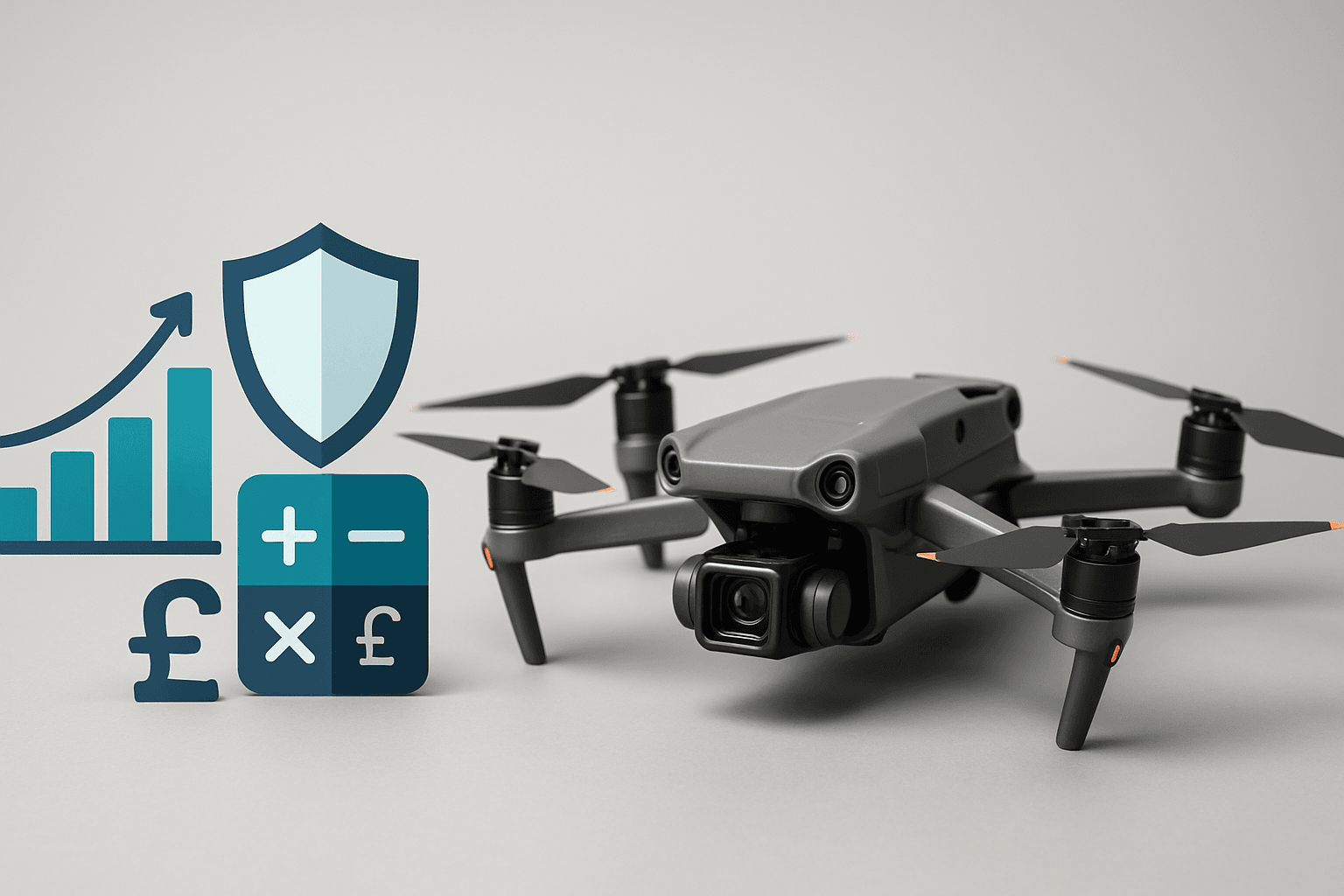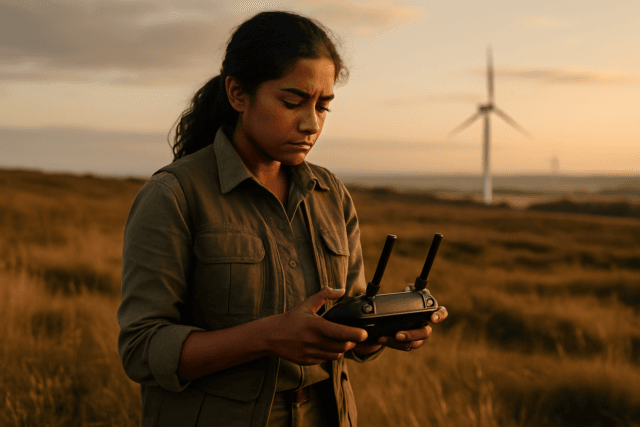Drones have become increasingly popular, utilized across various industries and by hobbyists alike. As drone usage soars, so does the need for adequate insurance coverage. Understanding the costs associated with drone insurance is essential for responsible drone operation. This guide provides a comprehensive overview of drone insurance costs in the UK, including factors that influence premiums, types of coverage available, and legal requirements.
Is Drone Insurance Really Necessary?
Whether drone insurance is mandatory depends on the nature of your drone operations:
Commercial Use: If you’re using a drone for any commercial purpose (e.g., aerial photography for pay, surveys, delivery services, or work-related tasks), the Civil Aviation Authority (CAA) mandates that you have third-party insurance. This insurance must comply with EC Regulation 785/2004.
Recreational Use: If you’re flying a drone for recreation, sport, or as a hobby, insurance is optional but highly recommended. Even if not legally required, you are responsible for any damage or injury caused by your drone.
Regardless of whether you legally need insurance, having it ensures peace of mind. The potential costs of legal fees or replacing your drone can be substantial, making insurance a worthwhile investment.
Factors Influencing Drone Insurance Costs
Several factors can affect the cost of drone insurance premiums in the UK:
Type of Coverage: The type of insurance you choose significantly impacts the cost. The main types are:
- Public Liability Insurance: This covers damages or injuries to third parties caused by your drone. It is usually more expensive than hull insurance but considered more critical, especially for commercial operations.
- Hull Insurance: This covers damage to or loss of the drone itself, including its components and payload. The premium depends on the drone’s market price and the inclusion of payload coverage.
- Additional Coverages: These can include personal accident cover, theft, flyaway coverage, and coverage for equipment.
Drone Value and Payload: More expensive drones and specialized payloads (e.g., LiDAR scanners, high-end cameras) will increase your insurance premiums. The age of the drone also matters, as premiums should be based on the depreciated cost.
Pilot Experience and Qualifications: Experienced pilots with demonstrable flight skills are considered lower risk, resulting in lower premiums. Specific training relevant to your drone operations can also help reduce costs. Certifications like the A2 Certificate of Competency (A2 CofC) or a GVC (General Visual Line of Sight Certificate) can demonstrate your competence.
Nature of Operations: Commercial operations are generally riskier than recreational use, leading to higher premiums. High-risk operations, such as flying near critical infrastructure or in hazardous locations, will further increase costs.
Coverage Level: Comprehensive policies covering theft, accidents, and liability will cost more than basic coverage.
Location: Operating in urban areas or regions with stricter regulations may raise premiums.
Annual vs. Short-Term Policies: Annual policies are generally more cost-effective for businesses using drones regularly, providing certainty and saving administrative time. Short-term policies may be suitable for single projects.
Turnover: If you intend to use your drone for commercial purposes, some insurers may ask for your turnover for the year.
Types of Drone Insurance Coverage
Understanding the different types of drone insurance coverage is crucial to selecting the right policy:
- Public Liability Insurance:
- Covers third-party bodily injury or property damage caused by your drone.
- Essential for commercial operators and highly recommended for recreational users.
- Meets the CAA’s requirements and EC Regulation 785/2004.
- Hull Insurance (Physical Damage Coverage):
- Covers physical damage to the drone itself resulting from accidents, crashes, or malfunctions.
- Important for mitigating the financial impact of repairs or replacement.
- Payload Insurance:
- Covers damage to or loss of valuable attachments like cameras, sensors, and other specialized equipment.
- Ensures that high-value equipment remains financially protected.
- Theft Insurance:
- Covers the theft of your drone.
- A prudent investment due to the risk of drone interception for illegal activities.
- Flyaway Insurance:
- Provides coverage if your drone is lost due to a flyaway (loss of contact with the controller).
- Personal Accident Insurance:
- Provides benefits if the pilot suffers an accidental bodily injury while operating the drone.
- Professional Indemnity Insurance:
- Protects against claims arising from errors, omissions, or negligence in professional services provided using the drone (e.g., surveying, photography).
Average Drone Insurance Costs in the UK
It’s difficult to pinpoint an exact average cost for drone insurance, as it depends heavily on the factors mentioned above. However, here are some general estimates:
- Hobbyists: Can find basic public liability insurance for as little as £24.99 per year through membership programs like FPV UK.
- Commercial Operators: Premiums typically start from around £200 per year, but can vary widely based on the level of cover required. Some insurers may offer interest-free installments.
Examples of Drone Insurance Costs:
- Drone Cover Club: Offers annual membership with £12 million public liability insurance starting at £29.95. They also provide options for 2-day, 30-day, and 6-month cover periods.
- FPV UK: Provides £5 million public liability drone insurance cover for £24.99 per year, including commercial cover up to £15,000 turnover.
- James Hallam: Drone insurance premiums start from approximately £200 plus IPT (Insurance Premium Tax) per year.
Tips to Minimize Drone Insurance Costs
Here are some strategies to potentially lower your drone insurance premiums:
- Improve Pilot Qualifications: Obtain certifications like the A2 CofC or GVC to demonstrate your professionalism and reduce risk.
- Choose Appropriate Coverage: Only purchase coverage that matches your specific operations. Recreational pilots may not need extensive commercial liability coverage.
- Maintain a Clean Flight Record: Fewer incidents and claims will help keep premiums low.
- Bundle Policies: Combine drone insurance with other business insurance policies for potential discounts.
- Use Safety Features: Equip drones with GPS tracking, collision avoidance systems, and return-to-home (RTH) functionality to lower risk.
- Increase Excess: Opting for a higher excess (the amount you pay out-of-pocket before the insurance kicks in) can lower your premium.
- Pay Annually: If possible, pay your premium annually rather than monthly, as some insurers offer discounts for annual payments.
UK Drone Insurance Providers
Several specialist drone insurance providers operate in the UK. Here are some notable options:
- Coverdrone: Offers comprehensive policies for commercial and recreational users, compliant with EC 785/2004. They provide flexible policies from 1 day to a full year, with worldwide cover as standard.
- Drone Cover Club: Tailored for drone and model aircraft hobbyists, offering membership options with public liability and personal accident insurance.
- FPV UK: Provides public liability insurance as part of its membership benefits, including commercial cover for low-turnover operations.
- Hiscox (in partnership with Moonrock Drone Insurance): Offers bespoke drone insurance covers tailored to user needs.
- BWI Aviation Insurance: A well-established provider specializing in aviation insurance, including drone insurance for both commercial and recreational operators.
- FlyCovered: Offers flexible insurance solutions for drone operators and pilots, covering a wide range of drone values and liability limits.
- ARPAS UK: An association that recommends its members hold suitable and valid insurance for their operations and can provide guidance on key considerations when choosing a policy.
Legal and Regulatory Requirements
The UK’s drone laws are primarily regulated by the Civil Aviation Authority (CAA). Key regulations include:
- Registration: Drones weighing more than 250g must be registered, and operators must possess both a Flyer ID and an Operator ID.
- Operational Categories: Drone operations are categorized into Open, Specific, and Certified categories, each with different requirements.
- Insurance: Commercial drone operators must have insurance that complies with EC Regulation 785/2004. This regulation sets minimum insurance requirements for air carriers and aircraft operators.
- Flying Restrictions: Drones must not be flown above 400 feet (for drones over 7 kg) and must remain within the operator’s sight to a maximum distance of 500 meters. Permission from the CAA is required to fly in congested areas.
Drone Insurance: What to Look For
When selecting a drone insurance policy, consider the following:
- Coverage Limits: Ensure the policy provides adequate coverage limits for liability, hull damage, and payload.
- Policy Exclusions: Understand any exclusions in the policy, such as specific activities or locations not covered.
- Compliance with Regulations: Verify that the policy complies with all relevant UK and EU regulations, including EC 785/2004.
- Claims Process: Inquire about the insurer’s claims process and reputation for handling claims efficiently.
- Customer Service: Choose an insurer with responsive and helpful customer service.
By understanding the costs, factors, and requirements associated with drone insurance, you can make informed decisions to protect yourself and your drone operations in the UK.





